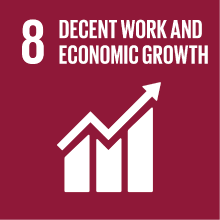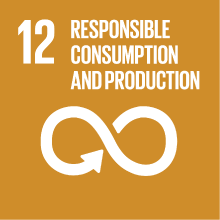TECHNOLOGIES FOR TRANSLATION AND POST-EDITING MOD.2
- Academic year
- 2024/2025 Syllabus of previous years
- Official course title
- TECNOLOGIE PER LA TRADUZIONE E POST EDITING MOD.2
- Course code
- LM7425 (AF:440601 AR:249881)
- Teaching language
- Italian
- Modality
- On campus classes
- ECTS credits
- 6 out of 12 of TECHNOLOGIES FOR TRANSLATION AND POST-EDITING
- Degree level
- Master's Degree Programme (DM270)
- Academic Discipline
- INF/01
- Period
- 2nd Semester
- Course year
- 2
- Where
- TREVISO
- Moodle
- Go to Moodle page
Contribution of the course to the overall degree programme goals
The main aim of the course is to provide students with key information about post-editing (with reference to the currently available ISO standard), to practise post-editing (with varying degrees of intervention in the raw MT output) and proof-reading, and to use Trados Studio 2022.
Expected learning outcomes
Knowledge and competences
By the end of the course, students will have acquired knowledge of:
- knowledge of the essential contents of the ISO 18587 standard on post-editing
- knowledge of the skills and competences required of post-editors according to ISO 18587
- CAT tools (Trados Studio 2022)
Applying knowledge and competences
By the end of the course, students will be able to:
- carry out post-editing with varying degrees of intervention on the raw output
- carry out proof-reading
- carry out translations using Trados Studio 2022
Making judgements
By the end of the course, students will be able to:
- assess the extent to which machine translation is appropriate and/or requires the intervention of the human translator
- evaluate the advantages and disadvantages of the technological tools used during the course
Communication skills:
By the end of the course, students will be able to:
- use the metalanguage of translation technology
- being able to work effectively in a team
- being able to communicate difficulties, doubts or critical issues
Learning skills:
By the end on the course, students will be able to nurture and enrich their knowledge and skills through training
Pre-requirements
- Excellent knowledge of the Italian language (at least B2 for international students)
- Positive attitude to technology
- Positive attitude to teamwork
- Critical thinking
- Attention to detail
Contents
1. Machine translation: evolution, main aspects, types, tools, critical analysis
2. Post-editing (PE vs. translation vs. revision, ISO 18587, skills, types of PE, editing actions, etc.)
3. Artificial intelligence: ethical and conscious use applied to translation
4. Proof-reading
5. Trados Studio 2022
6. Practical exercises (in class, at home, individual and group)
Referral texts
Some readings and other useful resources will be made available on the course Moodle space.
Assessment methods
1. Project work on post-editing to be delivered on Moodle (with provisional grade in thirtieths)
This project work is aimed at assessing the mastery of machine translation and post-editing in both theory and practice (see section ‘Expected learning outcomes’, ‘Knowledge and understanding’ and ‘Ability to apply knowledge and understanding’)
2. Brief oral discussion of the work carried out (the grade assigned to the Project may be confirmed, raised or lowered depending on the outcome of the discussion.
The oral test, based on the Project work, is aimed at assessing the student's command of metalanguage, decision-making skills and judgement with regard to the required tasks (see section ‘Expected learning outcomes’, ‘Judgement skills’, ‘Communication skills’ and ‘Learning skills’).
3. As an integral part of the exam, all students must obtain the RWS: Post-editing certification according to the instructions provided by the lecturer. This course is entirely online, free of charge, and consists of a single module, with certification upon completion. All instructions will be provided during the course.
Evaluation criteria
- critical analysis of the tool used and the output produced (advantages, limitations, errors, etc.)
- documentation on the Web (linguistic research, image research, consultation of sources, terminology databases, etc. to be noted down in detail and precisely)
- ability to identify critical points and intervene appropriately and effectively
Type of exam
Teaching methods
All students are required to sign up to the Moodle course that will be published on the lecturer’s personal unive webpage and, for exam preparation, refer to the materials and activities that will be uploaded in Moodle on a weekly basis.
Further information
2030 Agenda for Sustainable Development Goals
This subject deals with topics related to the macro-area "Circular economy, innovation, work" and contributes to the achievement of one or more goals of U. N. Agenda for Sustainable Development


